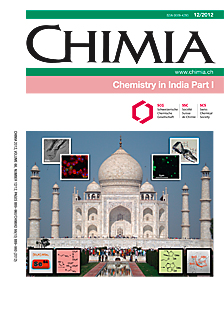Poly(lactic acid) Synthesis and Characterization
FH - HES
DOI:
https://doi.org/10.2533/chimia.2012.951Keywords:
Lactic acid, Lactide, Poly(lactic acid), Ring opening polymerizationAbstract
Poly(lactic acid) (PLA) is a promising biodegradable polymer based on renewable resources. This paper describes scale-up studies to synthesize high molecular weight PLA (>100'000 g/mol) in five steps from commercial lactic acid. The first four steps of this process consist of synthesizing a highly pure precursor, lactide, which can be converted into a high molecular PLA by ring opening polymerization (ROP). We produced PLA with a molecular weight of 109'000 g/mol using this strategy.Downloads
Published
2012-12-19
Issue
Section
Columns, Conference Reports
Categories
License
Copyright (c) 2012 Swiss Chemical Society

This work is licensed under a Creative Commons Attribution-NonCommercial 4.0 International License.
How to Cite
[1]
P. Sanglard, V. Adamo, J.-P. Bourgeois, T. Chappuis, E. Vanoli, Chimia 2012, 66, 951, DOI: 10.2533/chimia.2012.951.







